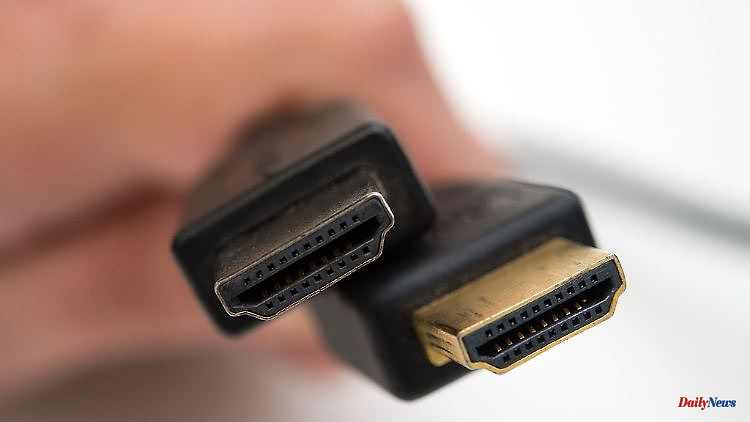If you want to buy a new television, you should make sure that the device supports HDMI 2.1 in order to be able to exploit all the possibilities for picture and sound now or in the future. But more than the label is important, additional information in the small print is decisive.
Soundbars, game consoles or Blu-ray players are connected to the television via HDMI connections if you want to get the best out of the devices. The digital high-definition multimedia interface has been in development for around 20 years and has pushed connections such as SCART or composite video into the analogue niche for image and sound transmission.
Most living rooms currently still have televisions that support HDMI 2.0, which was released in 2013. In the meantime, however, the further developed standard 2.1, which is more than five years old, is becoming increasingly important.
Although so much time has passed, most users will not miss HDMI 2.1, since the advantages of the standard over its predecessor are great but also quite special. Ultimately, it is about higher data rates for the transmission of sound and images. With HDMI 2.1 up to 48 gigabits per second (Gbit/s) are possible, with HDMI 2.0 up to 18 Gbit/s.
The newer standard thus allows, among other things, the transmission of video signals in 8K resolution (7680 x 4320 pixels) with a refresh rate of 60 Hertz (Hz). With 4K (3840 x 2160 pixels) even 120 Hertz is possible. With HDMI 2.0, a television can at best achieve 4K with 60 Hz.
HDR 10 or HDR Dolby Vision is already available with HDMI 2.0, but the video optimizations are now officially integrated. They enable a high dynamic range (High Dynamic Range) with strong contrasts and a large color range, whereby, in contrast to the simple HDR10, the metadata for each individual image is transmitted.
HDMI 2.1 also allows variable frame rates (Variable Refresh Rate/VRR), which means that so-called screen tearing can be avoided. It occurs when the TV's refresh rate does not match the output frequency of a current console (Playstation 5/Xbox Series X), resulting in stuttering. VRR syncs frame rates.
When it comes to sound, eARC (enhanced audio return channel) is particularly interesting. Because it can be used to transmit 3D sound such as Dolby Atmos or dts:X, which more and more current soundbars are mastering.
An advantage of HDMI 2.1 that has hardly been used yet is Quick Media Switching (QMS), which means that the screen does not temporarily go black when the frame rate is changed. Quick Frame Transport (QFT) reduces latencies (delays) in image transmission, the Auto Low Latency Mode (ALLM) automatically sets the ideal latency time.
The fact that HDMI 2.1 enables these technical improvements does not mean that every television with this label can do them all. Manufacturers can, for example, label a device accordingly even if it does not offer a 120 Hz refresh rate but has an eARC connector.
So far, this has not played a role in everyday film and series due to the lack of 120 Hz content. With a current console, however, gamers can already use the high frame rate. The same applies to ALLM or VRR, whose shortened response times and particularly fluid display are particularly effective in video games.
For users who do not gamble, only eARC is currently of interest, which enables 3D sound, among other things. Nevertheless, when buying a new one, you should make sure that the television supports as many HDMI 2.1 options as possible in order to be prepared for the future.
This also applies to HDMI 2.1a, which was introduced last year. It also brings Source-Based Tone Mapping (SBTM), with which the player and TV set automatically negotiate the best HDR display. High-quality televisions with HDMI 2.1 will probably receive the function via a firmware update.
Currently, no new cables are usually required for HDMI 2.1, as the maximum data rates have not yet been exhausted. If you buy a new cable, it's worth looking out for the "HDMI Ultra High Speed" label. Because only then do they actually achieve 48 Gbit/s and can transmit 4K with 120 Hz or 8K with 60 Hz.












